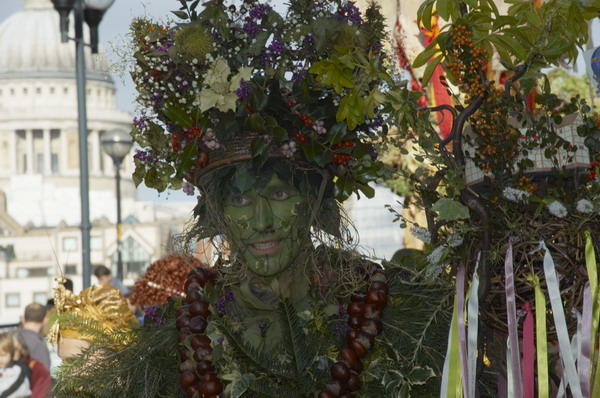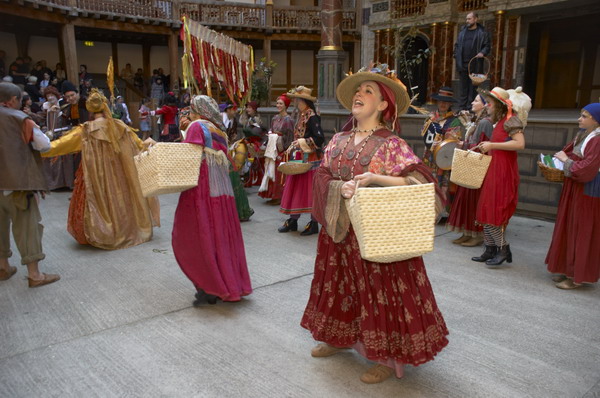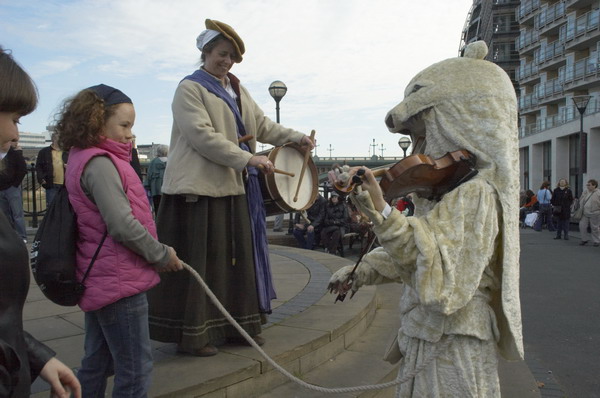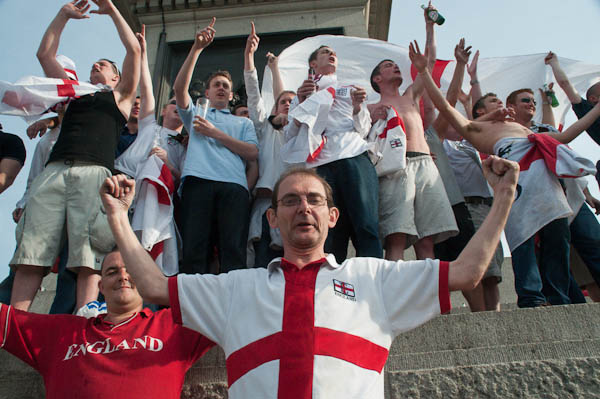October Plenty & Martyrdom of Ali: On Sunday 23rd October 2005 I photographed two very different cultural events in London, October Plenty, a theatrical harvest festival event on Bankside and in the afternoon a Shia Muslim annual mourning event in London to mark the Martydom of Ali, the cousin of the prophet Muhammad. Again I’ll share the text and pictures from My London Diary, with a few corrections to case, spelling etc.
October Plenty: The Lions Part – Globe Theatre & Bankside

The Lions Part is a group of actors who came together in the Original Shakespeare Company but now pursue independent professional careers in theatre and TV etc , but work together on various projects including three regular celebrations on Bankside in co-operation with the Globe Theatre.

One of these is October Plenty, loosely based on traditional English harvest festivities and particularly celebrating the apple and grain harvest.

Characters in the procession include the Green Man (or Berry Man), the Hobby Horse and a large Corn Queen stuffed with fruit and veg. Not to mention a violin-playing Dancing Bear and other musicians and more characters who take part in several plays and performances in various locations.

The day started in front of the Globe Theatre with the bear, then the procession came and led us into the Globe Theatre, where they gave a short performance before we went through the streets to Borough Market where further plays and games were scheduled. I decided it was time for lunch and left at this point.

The Martydom Of Ali – Hub-e-Ali, Marble Arch

Hub-e-Ali organise an annual mourning program in London to mark the Martydom of Ali, the cousin of the Prophet Muhammad and the first person to embrace Islam, who was martyred in 660CE in Kufa, Iraq.

Ali was struck by a poisoned sword while leading dawn prayers in the mosque, and died two days later. The event and its consequences continue to divide Muslims down to the present day.

Many (and not only Muslims) have regarded Ali as the model of a just Islamic ruler, working to establish peace, justice and morality.

The procession both marks the killing of Ali and also looks forward to the day when a descendant of the Prophet Muhammad will return to be the saviour of the world.

It also celebrates the duty of the followers of Islam to speak out against oppression and immorality, and to live pious lives in solidarity with the oppressed.

To show their sorrow, those taking part in the mourning parade (Jaloos) recite eulogies about Ali and beat their breasts (Seena Zani.) A coffin (Taboot) is carried as a part of the procession, along with symbolic flags. There is also a long session of recitations before the parade.
Flickr – Facebook – My London Diary – Hull Photos – Lea Valley – Paris
London’s Industrial Heritage – London Photos
All photographs on this page are copyright © Peter Marshall.
Contact me to buy prints or licence to reproduce.


















